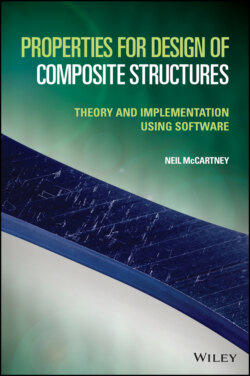Читать книгу Properties for Design of Composite Structures - Neil McCartney - Страница 48
3.2.2 Temperature Distribution for an Isolated Sphere Embedded in an Infinite Matrix
ОглавлениеA set of spherical polar coordinates (r,θ,ϕ) is introduced having origin at the centre of the sphere of radius a. For steady-state conditions, the temperature distribution T(r,θ,ϕ) in the particle and surrounding matrix must satisfy Laplace’s equation, which is expressed in terms of spherical polar coordinates for the case where the temperature is independent of ϕ, namely,
(3.3)
On the external boundary r→∞ a temperature distribution is imposed that would lead, in a homogeneous matrix material under steady-state conditions, to the following linear temperature distribution having a uniform gradient α
(3.4)
At the particle/matrix interface r = a, the following conditions are imposed
(3.5)
where both the temperature and the normal heat flux are assumed to be continuous across the interface, and where the isotropic thermal conductivities of particles and matrix are denoted by κpandκm, respectively. The temperature distribution T(r,θ) in the particle and matrix, satisfying (3.3), the condition at infinity and the interface conditions (3.5), is given by
(3.6)
As x3=rcosθ, the temperature gradient is uniform within the particle. Any temperature T0 can be added to (3.6) without affecting the satisfaction of the interface conditions (3.5). As an infinite medium having a uniform temperature gradient is considered, it is inevitable that temperatures lower than absolute zero will be encountered. This physical absurdity can be avoided by assuming that the system is taken as a spherical region having a very large but finite radius, in which case T0 would be chosen large enough to ensure that the absolute temperature distribution is everywhere positive.
